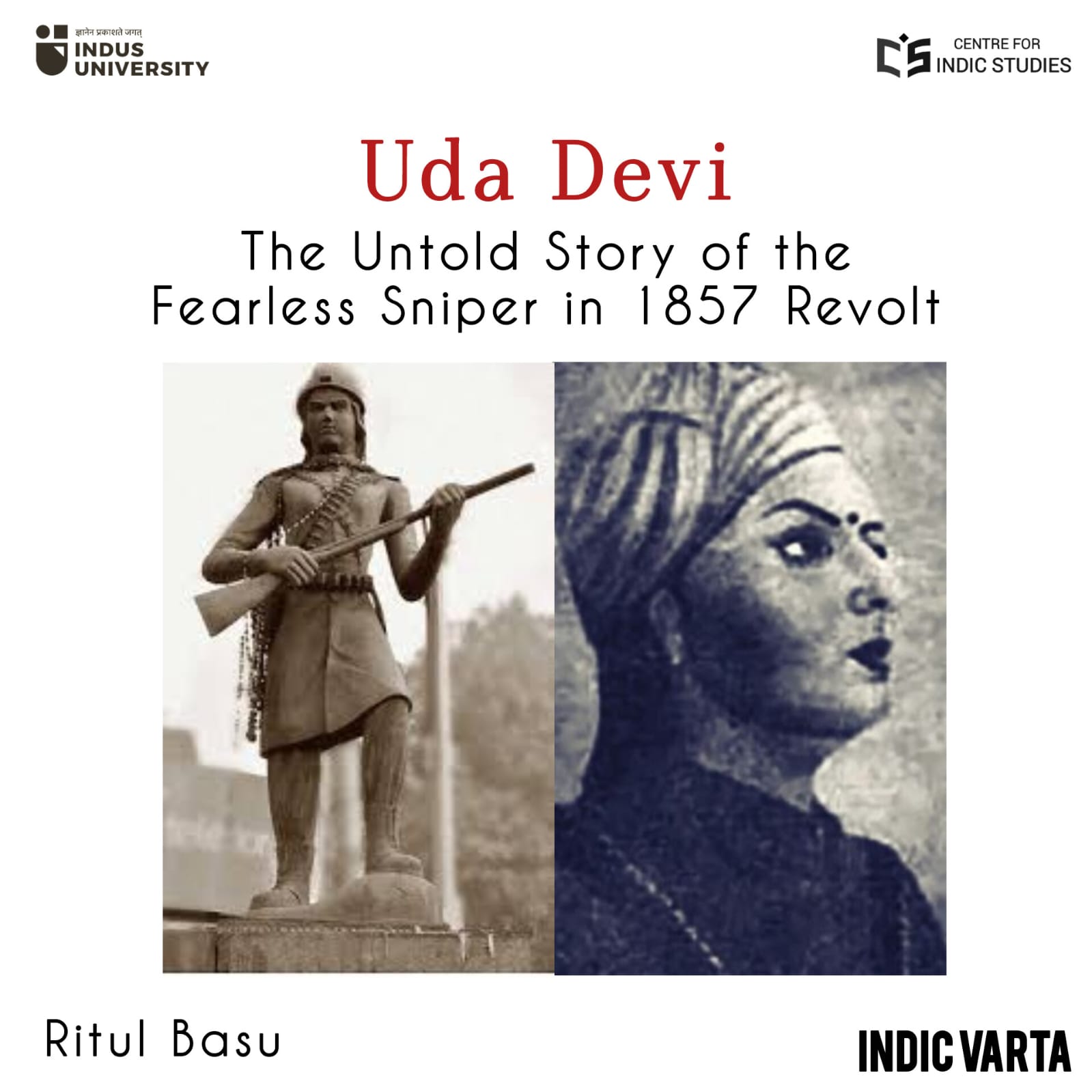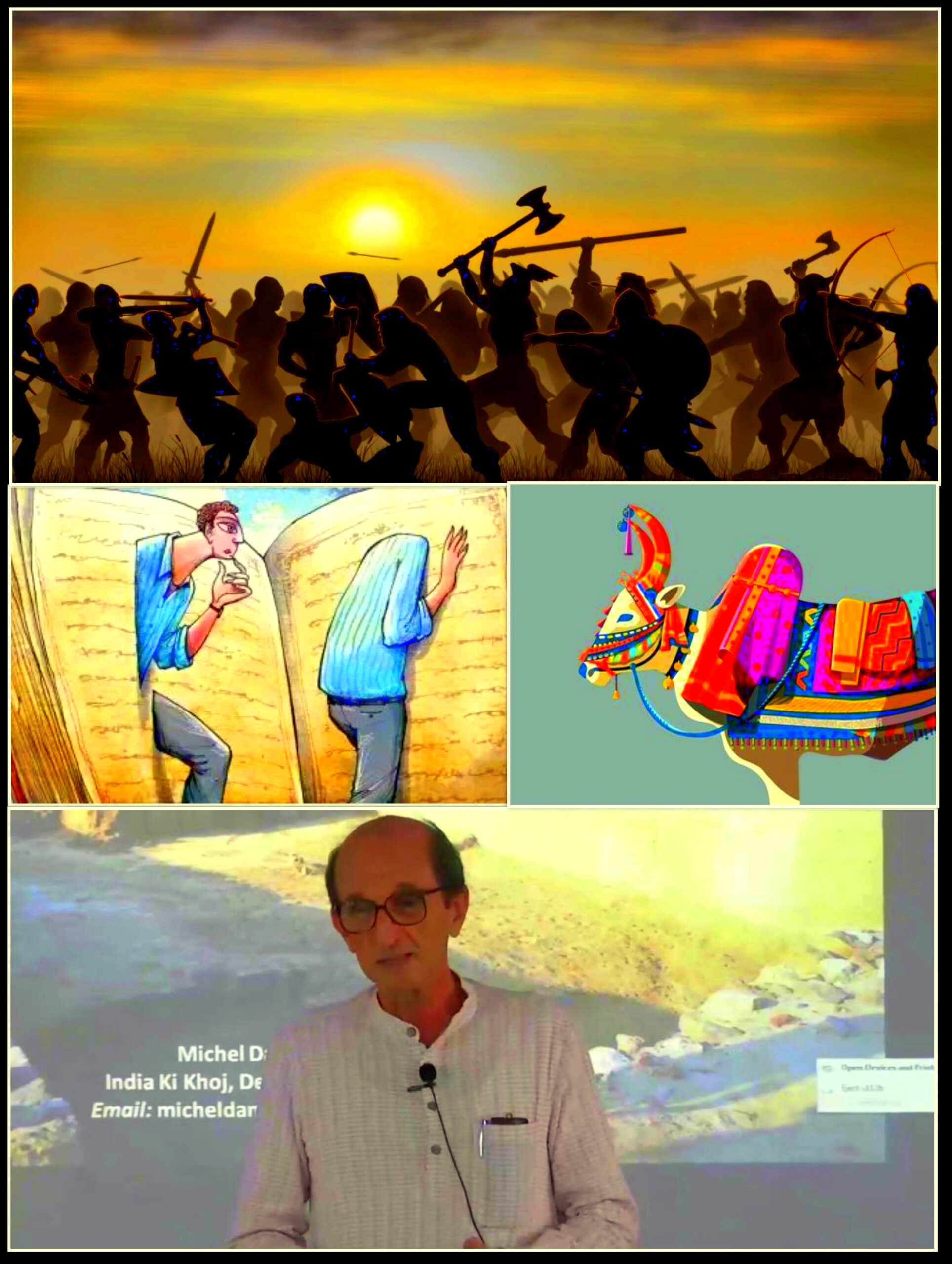- Visitor:149
- Published on: 2025-05-23 02:10 pm
Uda Devi: The Untold Story of the Fearless Sniper in the 1857 Revolt
What truly needs to be done is to infuse the spirit of Veerangana Uda Devi into the hearts and minds of our youth, starting at the very grassroots level—schools. Our educational institutions, from schools to colleges, must take it upon themselves to ensure that students are made aware of who our real heroes are. Who do they look up to? Are they influenced by social media personalities, Bollywood actors, or sports stars? Or are they inspired by true national heroes like Uda Devi, whose courage and sacrifice were far more meaningful than fleeting fame or glamour?

In the history of Bharatvarsha, one shall find the stories of countless individuals who transcended the limits of their mortal existence, dedicating their lives to the service of the Nation These unsung heroes, driven by an unwavering devotion to a cause far greater than themselves, often remain overlooked in the passage of time. This article sheds light on one such remarkable heroine, Uda Devi, a courageous lady sniper who played a crucial role in the Revolt of 1857, the First War of Indian Independence. Uda Devi fought with unparalleled bravery during the Siege of Sikandar Bagh in Lucknow, where she single-handedly killed over 32 British soldiers. Yet, as history often unfolds, the good die young—Uda Devi was tragically killed during the course of the Revolt. However, her legacy proved too colossal to be forgotten in the sands of time.
Birth and Origin: A Woman of Defiance
Uda Devi was born in Ujiriao village, located in the Oudh region, now part of Uttar Pradesh. She was married to Makka Pasi, a soldier in the Oudh army. The tragic martyrdom of her husband during the Battle of Chinhat ignited a deep sense of rage and sorrow in her. Her husband’s death fueled Uda Devi's resolve to avenge him, and this personal loss transformed into a broader commitment to the rebellion against the British East India Company. In the wake of her husband's death, Uda Devi joined forces with Begum Hazrat Mahal, the Begum of Oudh, who was a prominent figure in the uprising. Under the Begum’s leadership, Uda Devi formed a women’s battalion that joined the ongoing rebellion. Together, these women warriors fought fiercely against the British colonial forces, refusing to let gender or societal norms dictate their role in the struggle for independence. Uda Devi was not just a widow seeking revenge but a symbol of empowerment, demonstrating that women too could play a significant role in the battle for freedom.
The Glory: Uda Devi’s Battle of Sikandar Bagh
The fall of 1857 marked a pivotal moment in India’s fight for independence, as a widespread revolt erupted in Delhi, Jhansi, Kanpur, and Lucknow against the oppressive British East India Company. In Lucknow, a small but determined British garrison of 2,200 soldiers found themselves trapped on the banks of the Gomti River, surrounded by rebel forces and facing severe shortages of supplies. A relief column of British soldiers, led by General Colin Campbell, managed to break through the rebel lines in September, but their victory proved temporary as they lacked sufficient firepower to maintain control.
As the siege continued, the British forces found themselves under pressure from the rebels, who fortified their positions. One of the most intense battles of the uprising occurred at Sikandar Bagh, a fortified garden in Lucknow. The British forces, under the command of General Colin Campbell, launched an attack on Sikandar Bagh, which was fiercely defended by rebel forces. The defenders were met with overwhelming British firepower, but they held their ground with determination. In the battle that ensued, over 2,000 rebels and many British soldiers lost their lives in fierce hand-to-hand combat. The British forces were met with an unyielding wall of women, standing resolute in their determination.
During this battle, Uda Devi’s courage reached legendary heights. On the fateful day of November 16, 1857, she seized the opportunity to fulfil her vow of vengeance for her husband’s death. Disguised as a man, Uda Devi climbed a banyan tree, armed with ammunition and a pair of heavy old-pattern cavalry pistols. From her elevated position, she picked off British soldiers, killing over 32 of them, and disrupting the British forces’ advance. Her precise shooting, which resulted in casualties with bullet wounds indicating a steep, downward trajectory, led British officers to suspect the presence of a sniper.
Her death came only after she had made a profound impact, single-handedly killing over 32 British soldiers. As the British forces overran Sikandar Bagh, they fired at the tree where Uda Devi had hidden herself. It was then that they discovered her lifeless body, realizing only later that the brave sniper who had wreaked havoc on their forces was a woman—a defiant rebel, disguised as a man. As noted by William Forbes-Mitchell in Reminiscences of the Great Mutiny, recounts: "She was armed with a pair of heavy old-pattern cavalry pistols, one of which was in her belt still loaded, and her pouch was still about half full of ammunition, while from her perch in the tree, which had been carefully prepared before the attack, she had killed more than half-a-dozen men."
Aftermath and Legacy
Uda Devi’s sacrifice, though significant in the context of the Revolt of 1857, was largely overlooked in mainstream historical accounts for many years. However, her legacy has endured through the efforts of the Pasi community, who honour her memory every year on November 16, the anniversary of her martyrdom. The Pasis, particularly those from Pilibhit, West Bengal, Madhya Pradesh, and Bihar, gather to commemorate her heroic actions and pay homage to the brave woman who defied societal norms and fought for the independence of her nation.
In recognition of her contributions, a statue of Uda Devi was erected in 1990, and there have been plans to build a 100-foot-tall statue of her in Lucknow, Uttar Pradesh. A park and memorial dedicated to her are also being developed, ensuring that future generations will be reminded of her immense sacrifice. In 2021, the Uttar Pradesh government announced the formation of a Provincial Armed Constabulary (PAC) women’s battalion named after Uda Devi, further cementing her status as a symbol of strength and courage for the people of India.
But is that enough? This question weighs heavily on our collective conscience.
The commemoration of Uda Devi’s death anniversary, the parks, statues, and memorials that have been erected in her honour are all but physical manifestations of our respect and gratitude. These are merely symbols— they serve as outward expressions of reverence. Without a deeper, internal connection to her legacy, they risk becoming mere relics of history. The actual tribute to Uda Devi’s sacrifice and valour lies not in how we build monuments, but in how we embed her spirit into the very fabric of our national psyche. Without this internalization, these monuments will inevitably succumb to the passage of time, becoming forgotten as just another landmark.
What truly needs to be done is to infuse the spirit of Veerangana Uda Devi into the hearts and minds of our youth, starting at the very grassroots level—schools. Our educational institutions, from schools to colleges, must take it upon themselves to ensure that students are made aware of who our real heroes are. Who do they look up to? Are they influenced by social media personalities, Bollywood actors, or sports stars? Or are they inspired by true national heroes like Uda Devi, whose courage and sacrifice were far more meaningful than fleeting fame or glamour?
Only then does any outward expression of reverence possess true significance. Those who lived and perished for the nation have long since departed. They were indifferent to whether we remember them or not. Their sacrifice was never for personal recognition but for the greater good of the land they loved. If we are able to keep their memory enshrined within our hearts, it shall be for our own good. This will serve to enrich us and our posterity, continuing to inspire and guide the course of our nation's destiny.
Reference:
IGNCA. Research paper on unsung heroes of the Indian freedom struggle.
Forbes-Mitchell, W. (1910). Reminiscences of the Great Mutiny 1857-59. Macmillan and Co., Limited.
- 74 min read
- 0
- 0










